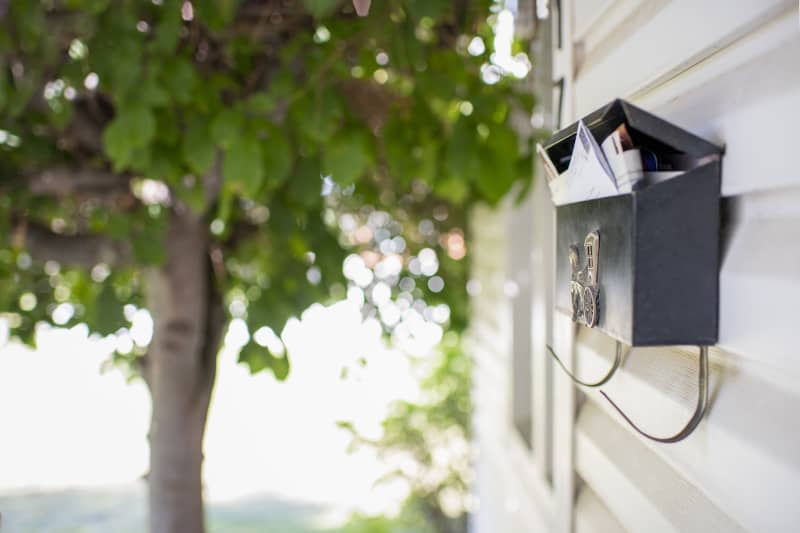I Asked My Mail Carrier for Advice on Organizing Mail, and This Is What He Said

Along with keeping up with laundry, staying on top of paper piles is one of my biggest struggles when it comes to never-ending homekeeping responsibilities. Although I’ve made significant attempts to use less paper and go digital as often as possible, my home is still relentlessly inundated with all kinds of paper: receipts; permission slips, calendars, and other notices from all five of my kids’ schools; coupons; papers from doctors’ offices; schoolwork and projects; and, of course, mail.
It might seem like mail would be the main source of the paper piles that multiply on surfaces all over my home, but there’s so much other paper around that mail often gets lost in the shuffle — which isn’t good because as much junk as there might be, mail paper piles also contain the really important stuff, like updated credit cards, checks, or government documents. I’m always worried I’m going to miss something and this niggles at me, making the stacks of paper more stressful than ever.
So I decided to do something a little unconventional: I asked our mail carrier if he had any tips for how to organize and stay on top of the mail so that nothing crucial falls through the cracks. “Well, ma’am,” he said, “at the office, we organize everything by address in little cubbies.” At first, I thought this didn’t really help me, but then something clicked. Organizing the mail by address is the way that it makes sense for mail carriers to categorize mail — and I could categorize mail in a way that makes sense for our household!
This idea is familiar; it’s part of what’s behind the practice of sorting that pile of mail over the recycling container before ever putting it down. But purposely categorizing all the mail takes this to another level, one that can infuse order into this type of paper pile so that the mail doesn’t become another languishing to-do that clutters surfaces.
I decided to try it right away. I took the stack of mail that the mail carrier had handed me while we were chatting and took it inside to categorize. I stood at the counter and put junk mail in a pile to be tossed in the recycling, put my husband’s mail in a pile, and my mail in a pile. This wasn’t necessarily by whom the mail was addressed to. Medical bills, even if they were mine, went into my husband’s pile because he deals with those, for example. Items like subscription renewals for my son’s nature magazine and coupons we might use went into my pile.
One key to this process was opening some of the mail on the spot. Because it’s not always clear what the contents are, opening the mail allowed me to properly categorize items and toss extra contents (like unnecessary return envelopes or ad inserts) right then and there, thereby further reducing my paper clutter. Opening the mail has the added benefit of making it faster to take action on items that need it when the time comes because there isn’t that mental and slightly physical barrier of having to open several envelopes and figure out what something is.
Additionally, opening the mail allows me to further categorize. Each step of categorizing reminds me of the batch processing I do when unloading the dishwasher. In the end, this upfront work chips away at the task as a whole and makes the entire process more efficient. For example, I can put things that need to be paid in one pile, other items that trigger a different kind of action in another, and papers that need to be filed or digitized in another.
I’m familiar with sorting papers daily, but for some reason, I never considered this kind of deeper sorting when it comes to the mail. Thanks to my mail carrier for cluing me into this insider tip!